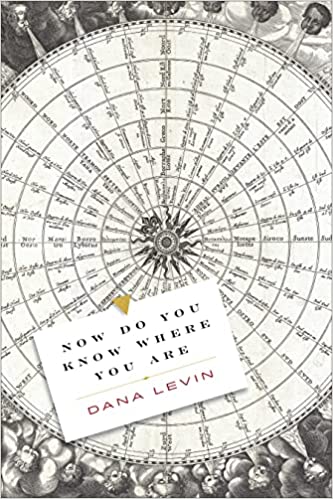Now Do You Know Where You Are
Now Do You Know Where You Are
by Dana Levin.
Copper Canyon Press, 2022,
92 pages, paperback, $17.00
ISBN: 9781556596339
In Tillie Olsen’s Silences, an eccentric, broadly–researched, masterful book published in 1965 about why writers (especially women) don’t write, Olsen states, “Extremity. When overborne, overworn — for a period — one breaks down, gives up, goes under, cannot go on.”
Dana Levin knows what Olsen is talking about. If we’re honest with ourselves, all writers know the precariousness of the writing life. One physical set back, one financial pitfall, one mental health crisis, and a writer can easily absent themselves from the page for years. To write is nothing more than an exercise in persistent presence with the page, but it involves much more luck than anyone would like to admit. In Levin’s fifth collection, Now Do You Know Where You Are, she walks that fine line between writing and silence for ninety–two pages. It’s a thrilling, doubt–filled, harrowingly honest walk.
The book begins in the aftermath of the 2016 election. By January 2017, the poet is in trouble, and so begins the ten–and–a–half–page journalistic poem, “Pledge.” The poet takes the eponymous pledge because her sister “made me take this pledge . . . to write every day for twelve weeks about your feelings (blech).” So much gets expressed in that parenthetical “blech” — is it a burp? A gagging finger down the throat? A casual vomit sound a poet makes when shoehorned into prose? Despite trepidations, the poet follows the pledge dutifully, and while every day doesn’t make it into the poem version, a reader can easily sense the poet’s state of mind:
March 6
Sitting with C., drinking early morning coffee, talking about not being up for the task of being us in this postelection environment, conflict avoidant and inward and hermetic, burrowers, hiders
The passage almost sounds like an introvert’s manifesto, but what’s important to note is that Levin does not fall victim to the silences that Tillie Olsen chronicles. Instead, rather than allow the troubled state of the world to clam her up, she over and over again finds a way to maintain her contact with the page.
The extent of this doubt should not be overlooked. The book is shot through with it. In “For the Poets,” a poem that hoarse whispers in all us poets’ ears, Levin writes, “if only three people like a tweet does anything you offer sound in the forest?” This is the kind of doubt that heads straight to the heart to ask, “why . . . do any of us do any of this?”
Another multi–page, prose–y poem in sections, “Appointment,” speaks deeply to this question, and offers a hero, of sorts, the Body Worker / Mystic Healer Jensen: “Tall and lanky, and his face, in profile, looked like a hawk’s.” He is, in his own words, an “Incarnation Specialist,” who works with the poet to let herself “be completely rewired.” There is much to admire in this poem, from the loose but sincere manner with which it handles the spiritual to the degree of depth it dives into personal story. Yet again, I was drawn to her thoughts about poetry and her trouble writing it: “poetry, marooned inside me. I’d been having so much trouble writing . . . being afraid to write because someone would see it (after four books!)” And while Jensen helps her to be born again as a poet, she also bravely helps herself by staying inside the doubt, finding a way to write in spite of it, and finding a way to allow poetic form to reflect the self.
While there are pages and pages of prose chunks that toe the line between a poem and a journal entry or a lyric essay, Levin also possesses a strong intuitive, experimental expression of line and punctuation. I love the scintillating juxtaposition such disparate forms create in the same book. In the jaw–droppingly austere “Instructions for Stopping,” the pressing physical danger of possible gun violence stretches out into the air as Levin draws the poem out on the page with short lines, spacious stanza breaks, and dashes that Dickinson your breath away. “Your Empty Bowl” goes even further down the line of possible dash usage by interrupting syntax with what seem like section breaks, but are really hyper–extended and drawn out dashes. The effect is like falling down stairs as a snowman.
To end, I want to return to “Pledge,” which turns out to be a poem about the speaker’s agony about putting down her beloved cat. A friend gives the speaker this advice, “maybe what we need is to feel a poet’s love for her dead cat. Haha! But seriously.”
Yes, very seriously. Yes.
— Jefferson Navicky


